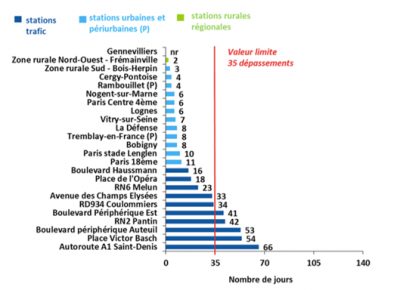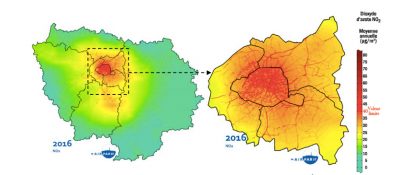Subsidiarity aims to divide competences between the European Union and the Member States according to the most appropriate level, based on the principle that European intervention must be justified by the fact that “the objectives of the proposed action cannot be sufficiently achieved by the Member States”. The transboundary nature of air pollution, particularly for ozone and particulate matter, justifies European action in line with the Treaty on European Union aimed at “the dimensions or effects of the proposed action” (TEU, Article 5(3)).
Figure 1. Number of days exceeding the daily threshold of 50 μg/m3 in PM10 particles in Île-de-France in 2016 [Source: © Airparif, Monitoring and information on air quality http://www.airparif.asso.fr/etat-air/bilan-annuel Ile-de-France, Year in Review 2016, Aiparif, June 2017, p. 14:
en]
Figure 2. Average annual nitrogen dioxide (NO2) concentration for all measuring stations in Île-de-France in 2015 [Source: © Airparif, Surveillance et information sur la qualité de l’air
en Ile-de-France, bilan année 2015, p. 30 : http://www.airparif.asso.fr/etat-air/bilan-annuel]






